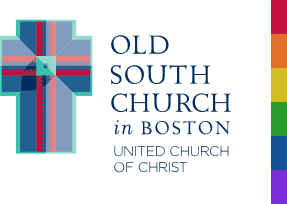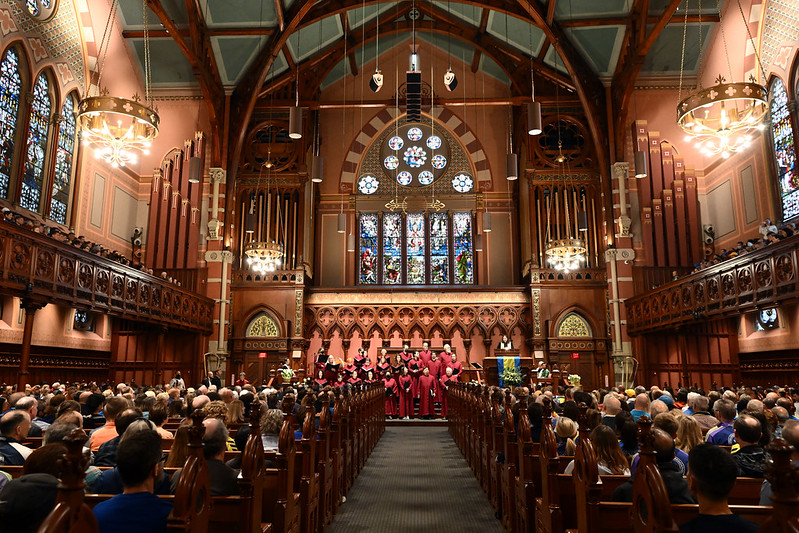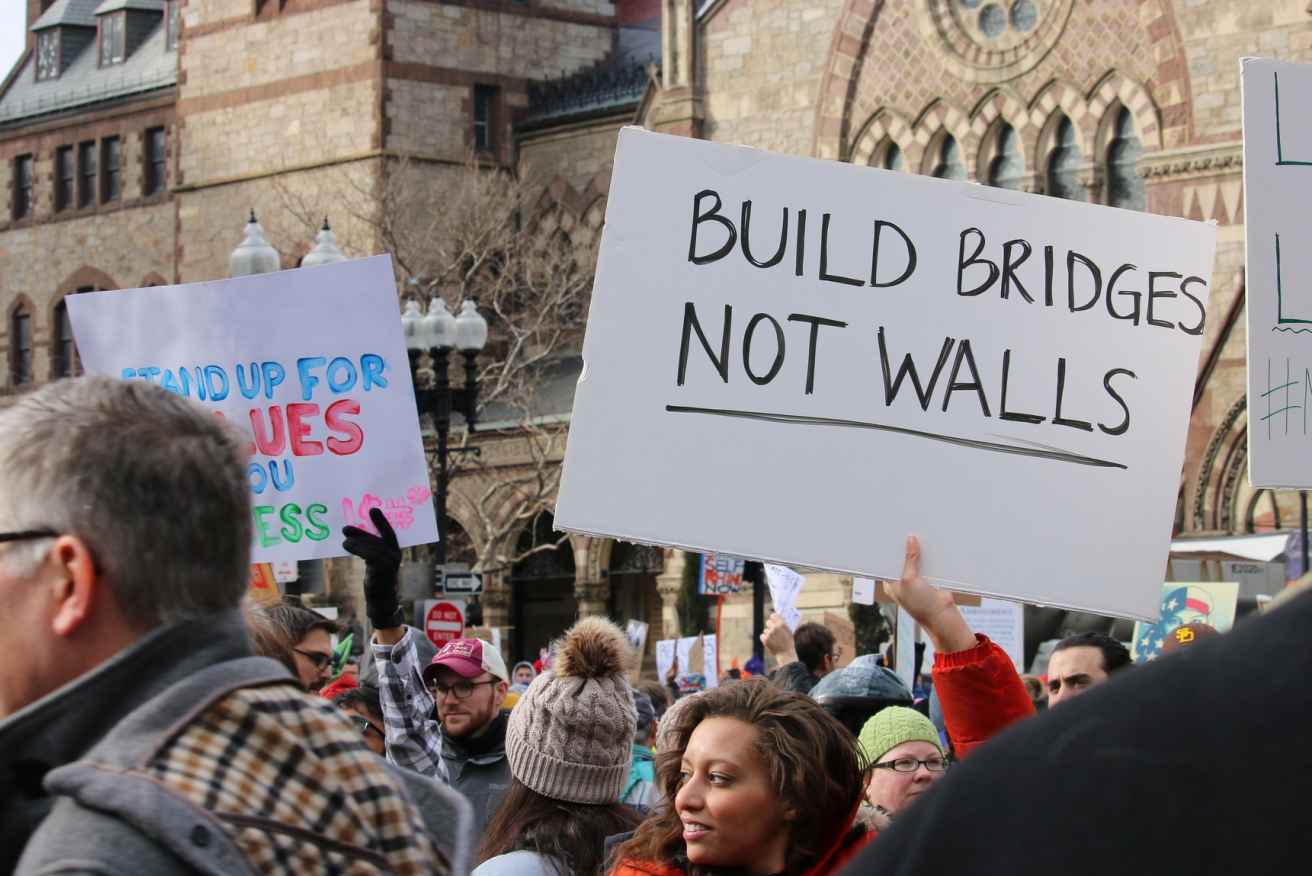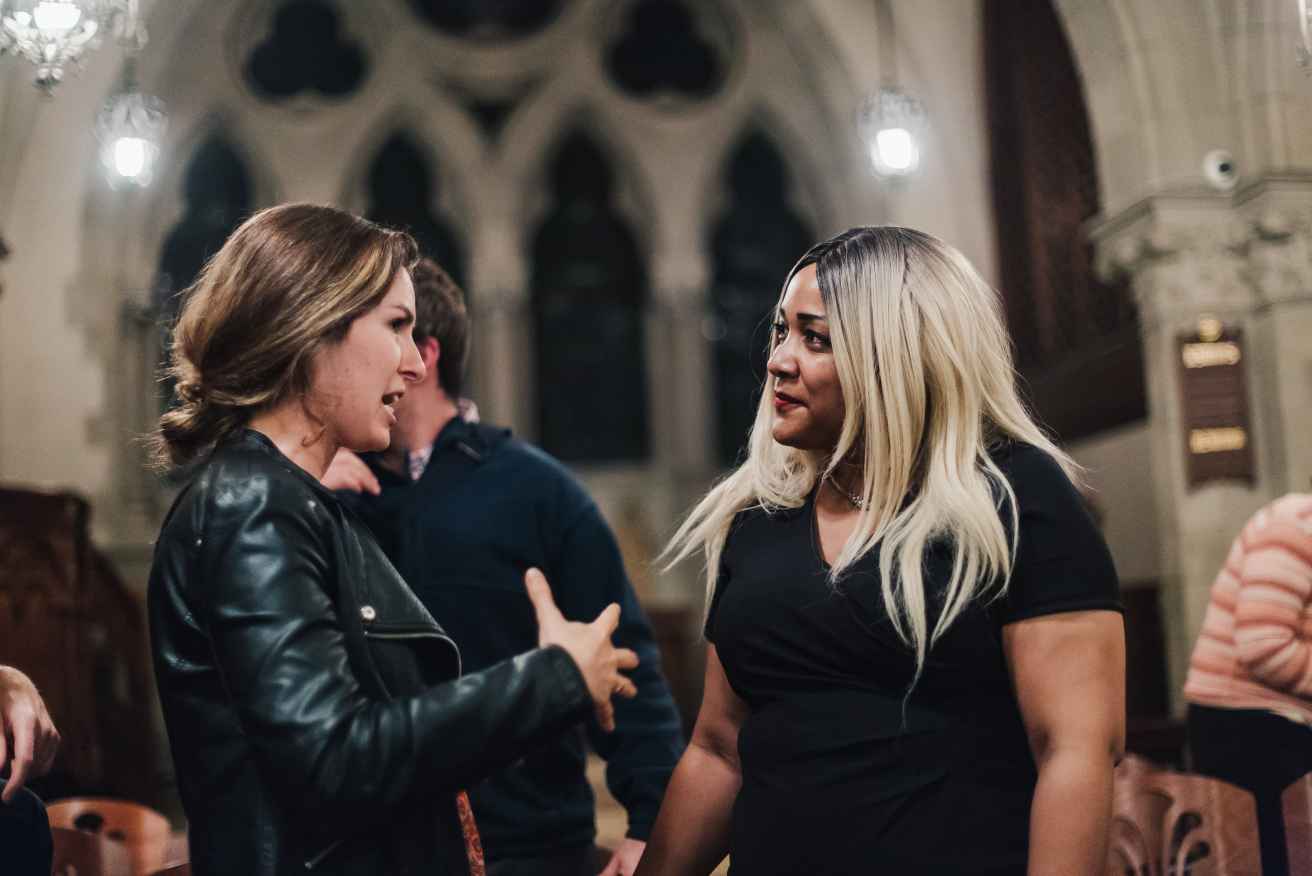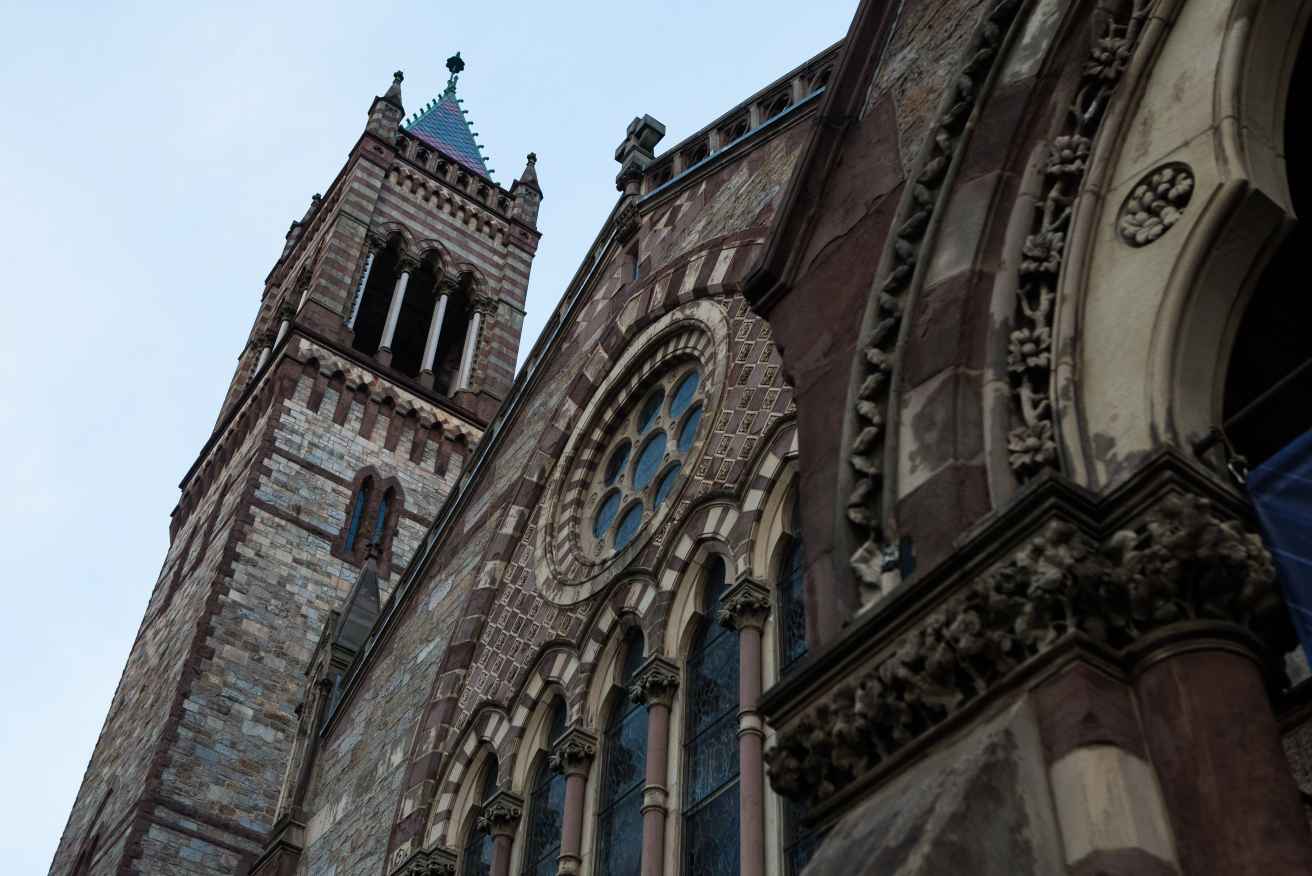Festival Worship
Festival Worship
The City
It begins in a garden, but it culminates in a city. The Bible opens in a garden. Eden is beautiful and bountiful: enormous banana leaves, great yellow trumpet flowers, Chinese hibiscus blossoms as large as dinner plates, passion flowers in electric purple.
The Bible opens into this splendid, riotous, perfect garden of God's own planting.
You could be forgiven, therefore, if you supposed that the destiny of humanity might entail a return to a garden paradise: something like the Elysian fields of the Greeks, or the green pastures of Psalm 23, or the Garden of Eden reprised.
Instead, the Bible's the final scene, the denouement, takes us to a city, an immense, urban metropolis: "the holy city, the new Jerusalem, coming down out of heaven from God …"
John imagines that this whole enterprise - this epic, multi-millennia human project, this scheme from Adam and Eve to the end of time as we know it … this relationship that opened in the story-scape of a Garden - will come to fruition in an enormous, urban cityscape, a metropolis … one, we are told, large enough to accommodate whole nations and peoples.
Perhaps we should not be surprised. After all, in its early centuries Christianity was an urban phenomenon. To be sure, Jesus started off in small towns: he was born in Bethlehem and grew up in Nazareth. On the other hand, his entire, three-year public ministry was one, long pilgrimage toward the city, toward Jerusalem.
After Jesus' death, it was in the city that his followers gathered. They were in the city when the Spirit came upon them. It was in the city that the church was born. The most telling expression of that urban birth: the moment that men and women, hailing from different nations and speaking different languages, understood each other, comprehended each other.
In the years that followed, St. Peter presided over the mother church in Jerusalem, while Paul carried the faith to urban centers across the Mediterranean.
In this final, strange, chaotic, visionary book of the Bible, the Book of Revelation, John is not writing to ones who have withdrawn from the world or turned their backs on it. He does not address himself to cloistered monks, or to ones gathered at rustic, lakeside retreat centers.
John writes to urban Christians. He writes, in fact, to Christians whose context for ministry is remarkably like our own. He writes to Christians gathered in seven large Mediterranean cities. He writes to Christians who are deeply engaged in the world… in all its materiality. He writes to Christians who witness to the ways of God, the ethics of God, in the midst of the secular market place. He writes to Christians who, while caring tenderly for widows and orphans, for the enslaved and the poor, for the ill and the ill-equipped, have something serious to say about the distribution of resources, such as food, healthcare and housing.
Despite the appeal to the imagination of bucolic settings conjured by Elysian fields, green pastures, or a garden paradise regained, Christian faith claims that we realize our destiny not in isolation, but in interdependence, not in solitude but in community, not in homogeneity but in variety, not in tribalism but in multi-nationalism, not in retreat but in engagement, not in solo endeavor but in symphonic expression … and not, finally, in a garden but in the city.
John describes this future holy city as beautiful. Its pillars, walls, gates and buildings are golden and bejeweled.
The city he sees in his vision is massive. It measures twelve thousand furlongs (1,500 miles).
This is not, therefore, a miserly city limited to accommodating the faithful few, the elect, the perfect. (You remember all those books about those who are left behind?) The city John sees is so large, so spacious that no one need be left behind. It is a city, he says, whose redeemed are uncountable.
There are no lights in this city: no candles or oil lamp. Nor is there need for moon, or sun, or stars. All such lights are rendered irrelevant. The holy city is illumined from within by the dazzling presence and being of God.
There are no tears in this city … no death, no sorrow, no pain.
And there is something else about this city. There is no temple, no church or cathedral, no mosque or synagogue, no shrine or sanctuary. (Imagine Jerusalem without any of these!) There are no sanctuaries in the City seen of John, because the City itself is the holy of holies. The divine being is omnipresent.
Christian tradition has understood the church, each church - this very church in which we are here gathered - to be a symbol-in-miniature of the Holy City seen of John. Christian tradition claims that it is the responsibility and privilege of each church to hint at, to point toward, to incarnate and thereby anticipate the Holy City.
Like the Holy City, the church (this church) broods over the life of the community it serves. It attracts divers people and invites them into harmonious relationship. It is gathered around God by whose light alone we make our way.
If the church is to be a convincing symbol of the Holy City such a church must be filled by high and low, rich and poor, weak and strong, one with another.
Like the Holy City it must be well tended, lovingly cared for, comfortable and beautiful.
It must be hospitable so that all who enter it experience being well-received, awaited and wanted.
It must bring out the best in those who come for worship and education, fellowship and service … until they know themselves to be "members one of another," so precious to each other that when one grieves, all grieve; when one rejoices, all rejoice; when one baby is baptized, we all become godparents; when twelve among us travel to Appalachia on a mission trip, all the rest keep vigil and then rejoice with them upon their return; when one committee is determined to fund Habitat housing in Dorchester, the rest of us rally to help.
By a remarkable and happy coincidence, just like the Bible, Old South began in a garden! Our first meeting house, built in 1670, was planted in, or erected on, the site of what had been Governor John Winthrop's garden.
But today, while we have brought our love for gardens with us, we find ourselves in the heart of the city. We are, therefore, exactly where we need to be.
If we do our work well, this church will bear witness to what John has seen and heard of the future God intends.
God help us.
